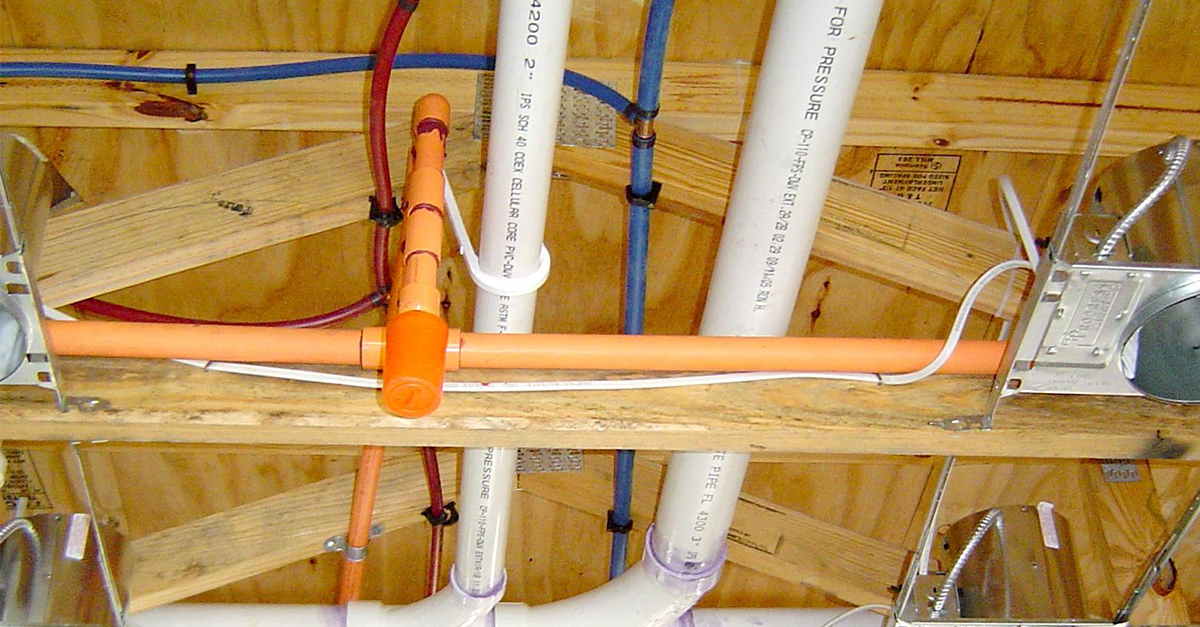Obtaining Insight into Home Plumbing Basics: A Beginner's Handbook
Obtaining Insight into Home Plumbing Basics: A Beginner's Handbook
Blog Article
Almost everyone has got their own conception in relation to How Does the Plumbing Work in Your Home?.

Plumbing is a necessary element of any kind of home, in charge of providing tidy water for alcohol consumption, food preparation, and showering, along with getting rid of wastewater safely. Recognizing the essentials of home plumbing is essential for every single property owner to make sure appropriate maintenance, troubleshooting, and, if essential, fixings. In this newbie's overview, we'll cover the basic ideas of home plumbing to help you become extra accustomed to how it functions.
Water System System
The supply of water system brings tidy water right into your home from a local water source or a personal well. It contains a primary water line that links to your home's plumbing system, usually situated underground. A water meter determines the amount of water taken in, while a shut-off valve allows you to regulate the circulation of water into your home.
Plumbing Components
Plumbing components are devices that provide water to various parts of your home and include sinks, taps, bathrooms, showers, bathtubs, and home appliances such as dish washers and cleaning machines. Each component is connected to the water supply system by means of pipes and fittings and may have its shut-off valve for maintenance or emergencies.
Water Furnace
The water heating system is responsible for heating water for residential usage, including bathing, food preparation, and cleansing. Usual types of water heaters include tank-type hot water heater, tankless (on-demand) hot water heater, and heatpump hot water heater. The hot water heater is linked to the water system and delivers warm water to plumbing fixtures as needed.
Water drainage System
The drainage system eliminates wastewater from your home and brings it away to a sewage treatment center or septic system. It consists of a network of pipes, fittings, and fixtures that carry wastewater from plumbing components to the major drain line or septic tank. Correct water drainage is vital to protect against obstructions, backups, and sewage leakages.
Air flow System
The air flow system assists preserve correct atmospheric pressure and prevent sewer gases from entering your home. Air vent pipes, also known as air vent heaps, prolong from plumbing components to the roofing system, permitting sewer gases to run away safely outdoors. Air flow pipelines also enable air to go into the water drainage system, promoting smooth wastewater flow and stopping suction or vacuum results.
Typical Plumbing Devices
Having the right devices handy is vital for executing fundamental plumbing repairs and maintenance tasks. Typical plumbing tools include flexible wrenches, monkey wrench, pliers, pipeline cutters, hacksaws, bettors, augers (or drainpipe serpents), and Teflon tape. Having these devices readily available can assist you tackle minor plumbing issues efficiently.
Basic Plumbing Fixings
While some plumbing repairs may require expert assistance, numerous common issues can be attended to with basic DIY methods. Learning exactly how to repair a leaky faucet, unblock a drainpipe, change a commode flapper, or fix a leaking showerhead can save you time and money on plumbing fixings.
Verdict
Comprehending the fundamentals of home plumbing is vital for each home owner to keep a secure, functional, and effective plumbing system. By familiarizing on your own with the water system, plumbing components, drainage system, ventilation system, usual plumbing devices, and standard repair services, you can confidently address minor plumbing concerns and guarantee your home's plumbing system operates efficiently.
Understanding Basics of Home Plumbing System: A Beginner's Guide
The Main Components of Your Home Plumbing System
The Water Supply System
This system is responsible for transporting fresh water into your home. It usually has a main water line that splits into two branches: one directed towards cold water services and the other connected to a water heater for hot water. The pressure is key here; it ensures water reaches all parts of your house.
The Drainage System
Once water has been used, it becomes wastewater that needs to be removed from your home. This is where the drainage system comes into play. It includes all the pipes that carry wastewater and sewage away from your house to sewage treatment facilities or septic tanks.
The Vent System
The vent system prevents sewer gases from entering your home and helps maintain the pressure balance that allows wastewater to flow out properly. These vents usually exit through the roof of your house.
Water Heating System
For those who enjoy hot showers or using hot water for cleaning, the water heater is a crucial part of the plumbing system. It can be a tankless system, which heats water on demand, or a traditional water tank model.
Common Plumbing Problems and Basic Troubleshooting
Plumbing systems, while designed to be durable, can face issues like clogged drains, leaky faucets, or low water pressure. Here are some basic troubleshooting tips:
Clogged Drains
Use a plunger or a plumber's snake to try and dislodge whatever is blocking the drain. Regular cleaning can prevent clogs.
Leaky Faucets
Often caused by worn-out washers or gaskets, these can usually be replaced by someone with basic DIY skills.
Low Water Pressure
This might be due to sediment build-up in your fixtures or a leak somewhere in your water line. Cleaning out aerators or seeking a professional to detect leaks might be necessary.
Preventive Maintenance Tips
Maintaining your plumbing system is key to avoiding emergencies. Regularly check for leaks, avoid disposing of grease down the sink, and have your system inspected by a professional plumber at least once a year.

I found that piece on while doing a search on the search engines. Sharing is caring. Helping people is fun. I praise you for being here. Please stop by our site back soon.
Go Deal Report this page